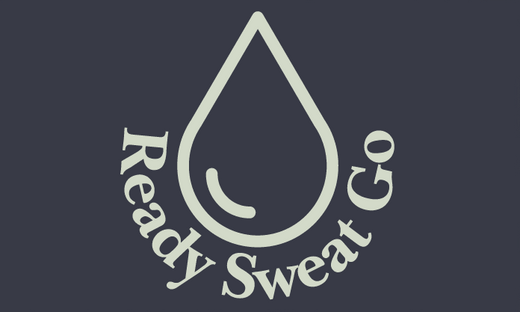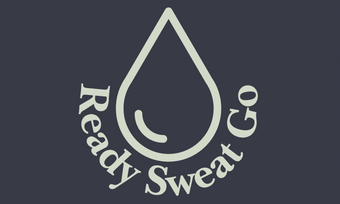Suncare Information
Tattoo Sun Protection
Everything you wanted to know about tattoos and sun care.
Mineral Sunscreen
We look at when and why you would choose a Mineral Sunscreen or a regular one.
Fragrance Free Sunscreen
Why might you need or want a scent-free sunscreen? Find out here.
Explore Our LifeJacket Suncare Range
Prepare your skin against life's daily rigours.
Soak Up the Sun, Stay Sun-Smart
UK's Active Lifestyle and Sun Exposure
Here comes the summer! Sun-starved hikers, cyclists, and runners - rejoice! The countdown is on for summer's warmth and radiance to brighten the UK for a short, but welcome, time.
While you shouldn't wish your life away, it is perfectly natural to look forward to things. Summer in the United Kingdom might not be a match for Florida sunshine or the glorious beaches of Australia, but when you make it through winter and a chilly spring, the warmer temperatures and sunnier days are a reward to embrace for those eager to make the most of the great outdoors.
You probably don’t need Ready Sweat Go, or anyone, to tell you when it’s sunnier in the UK, but to ensure you are ready for the months that lie ahead, let’s look through the key statistics for sunshine and temperature through to Autumn.
Average daily hours of sun and average temperatures in the UK
In 2023, the monthly average daily sun hours in the United Kingdom for April was 5.5, in May it rose to 7.3 and it peaked in June, reaching an average of 8.2 daily sun hours. The figure then moved between 5.2 and 5.4 between July and September, which suggests we are entering the peak time of year for sunlight, albeit, this is hardly breaking news!
A similar story unfolds for monthly average daily temperatures in the United Kingdom.
For April 2023, the average daily temperature for April was 8.6 degrees Celsius, rising to 12.6 in May and peaking at 16.8 in June. The average temperatures were then 16.3, 16.4 and 16.5 for July, August and September, respectively.
So, apart from confirming what you already knew or at least suspected, what does this information really mean? It says this is the time for you to plan ahead in ensuring you have everything you need to make the most of outdoor time.
For some people, this might mean specialist equipment, or it could relate to travel plans and accommodation. This might be the time when your preparations focus on getting your health, in body and mind, in the ideal place to help you reach peak performance levels.
No matter your activity, experience or location though, you must protect yourself in the sun.
The worrying truth is, many of us don’t think we need sunscreen at home, only when we jet off to sunnier climes.

Sunscreen isn’t just for your holiday.
A 2023 study by Melanoma Focus indicates 35% of Scottish respondents rarely or never use sunscreen when in the United Kingdom. Only 15% of Scottish respondents said they always use sunscreen.
This is worrying because melanoma is on the rise, and it’s a deadly form of skin cancer. It is preventable, but with around 200 people in
Scotland dying from melanoma each year, not enough is done to prevent it. And it’s not just a Scottish problem, more people in the UK die from melanoma each year than in Australia.
And the Australians experience proper sunshine. All that great weather and Kylie Minogue, they’ve got a lot going for them down under, even if their beer is a bit weak! They respect the sun though, that’s the important thing, and it’s what we don’t do well enough here. The Melanoma Focus study found most people don’t use sunscreen because they don’t expect to burn, but almost half of Scottish respondents said they experienced sunburn at least once every year.
And if you’re outside a lot, you’re exposing yourself to these risks.


Your location matters when it comes to sunlight
In the grand scheme of things, the UK is a small location.
No, let’s not get into political power and stature, we’re talking about the size of land. The following information shows the expanse of land in the UK, and compares it to other nations:
- The UK: 209'331km²
- Germany: 357'592km²
- India: 3.287 million km²
- Australia: 7.688 million km²
- USA: 9.834 million km²
- China: 9.597 million km²
So, this is quite a modest size, but the UK is still large
enough to experience considerable differences when it comes to average hours of
sunlight in a year.
It stands to reason the south, and in particular, the
south-east of England experiences the highest level of annual sunshine.
Weymouth in Dorset enjoys a fantastic 1,904 hours of annual
sunshine, with locations like Dover and Southampton experiencing more than
1,700 hours of sunshine a year. London is (relatively) lower, with Kew Gardens
clocking up 1,693 and Greenwich enjoying 1,526 hours a day.

Yes, the North sees less sunlight!
It won’t surprise you to learn that the further North you
travel, the less sunshine you see. Manchester is noted for being a rainy city,
and it welcomes 1,385 hours of sunshine a year. By the time you reach
Ambleside, in the Lake District, the average hours of sunshine per year falls
to 1,225.
That’s pleasing to hear for two reasons. Firstly, lots of
people love cool climes as they venture into nature at its finest in this
stunning part of the country. Secondly, I type this in Glasgow, a fantastic
place but not known or liked for its weather, and we actually receive a higher level of annual sunshine than the Lake District. Glasgow receives 1,280 hours of sunshine per year.
That is less than Aberdeen, Dundee and Edinburgh, all in the 1,400s, but it is more than Inverness, Kirkwall and Lerwick. Lerwick only receives an average of 1,158 hours of sunlight per year, so if you aren’t a sun-lover, that could be the place for you.
This information is important for a couple of reasons. It
reinforces that average statistics are useful, but they don’t tell the full story. Someone living and experiencing the great outdoors in Weymouth has a very different experience to people living a similar life in Glasgow or Manchester. This means you need to act accordingly, and prepare for the environment you find yourself in.
It also suggests if you are travelling for an outdoor
experience, say a race or a bucket-list mountain climb, make sure you prepare
for the weather and climate you’ll find there, not what you know.
This information also ties in with the earlier information
that Scottish people take the sun for granted, and don’t always prepare for it properly. From April to September, you’ll experience a higher level of sunshine per day than you see in the rest of the year, and you need to prepare yourself for it.
When it comes to sunlight and higher temperatures, it’s best
to enjoy it, and yourself. However, and even though there’s a good chance he’ll
be sacked in the time between writing this article and you reading it, we’ll riff on one of Neil Warnock’s most quoted comments:
Enjoy it by all means, but enjoy it being disciplined.
And that means staying hydrated and ensuring you have sufficient sunscreen protection in place.
Ready Sweat Go can help you with that if you need assistance, but the most important thing is wherever you go, take care of yourself, and you’ll find it easier to do what you love for longer.

FAQ's
Yes, despite the UK's reputation for cloudy weather, UV exposure is still a risk. Using sunscreen is
recommended, especially during the summer months.
Yes, southern parts of the UK like the South East tend to get more annual sunshine hours compared
to northern regions like Scotland.
Clouds don't completely block UV rays. In fact, up to 80% of UV can penetrate through clouds, so sunscreen is still needed on overcast days.
The summer months of June, July, and August tend to have the highest UV levels and longest daily sunshine hours in the UK.
No, UV exposure is still a risk in urban areas due to reflective surfaces like glass and concrete.
Look for moisturising, non-greasy sunscreen formulas that are less likely to feel heavy or sticky in cooler temperatures. The NHS recommends using a factor of at lest 30 SPF.
Brief periods of sun exposure without sunscreen can help with vitamin D production, but unprotected time in the sun should be limited.
Events with extended outdoor exposure may require more diligent sunscreen application, as well as
seeking shade and wearing protective clothing. Consider applying your sunscreen every two hours.
We think for prolongued sun exposure. Or when doing vigourous outdoor activities a mineral stick is the best option. To see why check out our in depth page on Sun Sticks.
Featured collection
View all
Shipping
Due to our small team size our order cut off, for same day dispatch is 12pm.
Standard delivery is 2 to 3 working days from dispatch.
Next day delivery takes 1 day from dispatch.
If you need help, email us at info@readysweatgo.co.uk




















